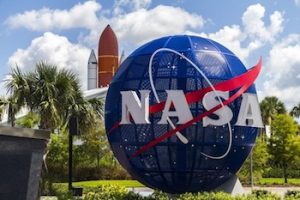NASA recently launched a new version of its Home & City website featuring a redesigned, interactive interface designed to give users a sense of the scope of technologies originally developed by NASA which they encounter in their lives, sometimes on a daily basis. The recent redesign is Home & City’s biggest update in a decade and includes a new interface specifically designed for mobile devices.
According to Derek Wang, NASA’s public outreach manager for the Space Technology Mission Directorate, the approximately 130 technologies included in the Home & City website is less than one percent of the thousands of technologies which NASA has developed and then spun-off to commercial partners. “Ten years ago, we created Home & City on a Flash-based system that has since become obsolete,” Wang said. According to Wang, the recent website redesign took about one year including updating the content and developing the mobile interface. “We actually use the gyroscopes built into devices so that if you’re viewing the living room on the website, you can walk around your own living room and turn your device left, right, up or down to see the technology through a different experience,” he said.
Some of the technologies included in the Home & City website are used everyday by people who might not realize that the technologies they’re using were first developed by NASA. Anyone using hairstyling tools like hair irons or dryers, for example, might not realize that nanosilver self-disinfecting agents and other metallic-ceramic nanoparticles created by NASA have been incorporated into those devices. These particles, which NASA first developed as a means of disinfecting spacecraft interiors, were found to have a novel use in hair products because the negative ions they release make it easier to style hair.
People might interact with other NASA technologies on more of a weekly basis such as those included in the sports arena in the City section of the website. For example, sports spectators watch athletes each week who play their respective sports using protective padding including a foam material invented by NASA. Many football pads, chest protectors for baseball catchers and shin guards for soccer players include a material first developed by NASA in the 1960s which is known as “temper foam.” This foam material absorbs shock loads, helping to keep athletes safe while playing sports where they might experience high-speed impacts. Tennis rackets are another piece of sports equipment which benefit from NASA technology. A macro-fiber composite incorporated into tennis rackets, first developed for advanced aerodynamic control in aircraft and for control vibrations in deployable spacecraft structures, helps to control racket vibration when a tennis ball makes contact, improving the racket’s performance.
As the father of three children, Wang was personally very interested in the NASA technological developments going into the creation of enriched baby food; this particular technology has also been recognized by the Space Technology Hall of Fame. NASA research focused on getting the proper nutrients to astronauts over the course of long-duration space flights led to the discovery of an algae that creates omega-3 fatty acids which can promote vision development in infants. “Every time I make a bottle of baby formula at three in the morning, I remember that this tech that I’m feeding my child actually came from NASA,” Wang said.
Some of the Home & City technologies have stemmed from NASA projects that would seem to have no connection whatsoever to the consumer product utilizing the technology. For example, it may not seem like developments in robotic rover technologies would lead to the creation of a precision coffee maker. However, rover control systems known as proportional-integral-derivative (PID) controllers ended up finding a novel applications in coffee makers when one NASA intern applied the use of PID controllers to those devices. PID controllers use feedback loops to monitor and correct outputs of controlled systems and their use in coffee makers enables precision temperature control for brewing coffee. “Even some of the greater coffee makers around brew water at about five to seven degrees away from the optimal hot water temperature,” Wang said. “This one can brew coffee using water that’s about a degree away from the optimal temperature, making probably one of the best cups of coffee you can have at home.”
“This is part of a story that we can tell that can make NASA more relevant in people’s lives,” Wang said. “Having a website like this allows us to show the public that the innovations that come from rocket science and space research actually impact their daily lives.” Some innovations, like ventricular assist devices and safer brain surgery, are even life-saving; Wang cited a personal locator beacon developed by NASA which can send a distress signal while at sea and has helped to save more than 40,000 lives. Wang said that the Home & City site would be updated over time to include new technologies and that there was a potential that the website could incorporate mixed reality into its interface at some point in the future.
Image Source: 123RF.com ID: 48460366 © Robin Runck.

![[IPWatchdog Logo]](https://ipwatchdog.com/wp-content/themes/IPWatchdog%20-%202023/assets/images/temp/logo-small@2x.png)


![[Advertisement]](https://ipwatchdog.com/wp-content/uploads/2024/04/Patent-Litigation-Masters-2024-sidebar-early-bird-ends-Apr-21-last-chance-700x500-1.jpg)

![[Advertisement]](https://ipwatchdog.com/wp-content/uploads/2021/12/WEBINAR-336-x-280-px.png)
![[Advertisement]](https://ipwatchdog.com/wp-content/uploads/2021/12/2021-Patent-Practice-on-Demand-recorded-Feb-2021-336-x-280.jpg)
![[Advertisement]](https://ipwatchdog.com/wp-content/uploads/2021/12/Ad-4-The-Invent-Patent-System™.png)







Join the Discussion
No comments yet.